
Types Of Asset Allocation Models For A Portfolio
November 24, 2021 | Financial Industry
Investment returns are constantly fluctuating in today’s market. Asset allocation is key to building a healthy retirement and achieving your investing goals. Here, you can learn about the benefits of establishing an asset allocation model and how to do so.
What Is Asset Allocation?
Maintaining a diverse investment portfolio is the key to financial growth. Asset allocation does this by spreading your money across various asset classes, ranging from stocks and bonds to short-term securities.
One of the key benefits of asset allocation, aside from diversification, is balancing risk. Investing in different asset classes balances your overall investment risk while laying the groundwork for your investment strategies.
Types of Assets
Just as with most things relating to financial securities, not all assets are created equally. Depending on the investment strategy and several other factors, a wide variety of assets may be selected as investments.
Large-Cap Stocks
Also known as “big cap,” large market capitalization stocks are those that represent companies with a market capitalization of more than $10 billion in value.
Market capitalization is a company’s total market value in dollars of their outstanding stock shares. Determining a company’s market capitalization is done by multiplying the company’s per-share stock price by the number of outstanding shares.
Large-cap stocks are a secure and poignant type of tactical asset allocation that promises impressive returns. Another benefit of this type of stock is transparency from the company. Large-cap companies want investors to find them quickly and keep them informed, so they publicize their financial information.
Mid-Cap Stocks
Mid-capitalization stocks refer to companies with a market capitalization between $2 billion and $10 billion. Like large-cap and small-cap, the title mid-cap estimates a company’s prevailing market value and is subject to change over time.
One of the key perks to investing in mid-cap stocks is the increased potential for growth. Unlike large-cap stocks, mid-capitalization companies are very likely to grow and expand their market value. As a result, mid-cap stocks are typically less risky as the company continues to flourish in its particular industry with higher growth potential.
Small-Cap Stocks
The last of the three capitalization stock categories are small-cap stocks. As the name suggests, these stocks represent companies with a lower market value, typically ranging between $300 million to $2 billion.
Similar to mid-capitalization stocks, small-cap stocks offer impressive growth potential. In addition, small-cap stocks are known to surpass large-cap stock performance regularly; however, they tend to present more risk as they have a relatively small market value and fewer commodities.
Another small-cap investment option is the micro-cap stock. Micro-caps refer to companies with a market value between $50 and $300 million. This investment category is ideal for those looking to enter the stock market and buy more affordable shares.
International Securities
The International Securities Exchange, or ISE, gives investors electronic exchange options. Securities offer investors a share in stocks or bonds via a financial contract.
International securities allow investors to improve liquidity through quick foreign exchange transactions. This type of strategic asset allocation gives investors a more efficient way to expand their investment portfolio with added liquidity and reduced volatility. Many experienced investors add international securities to their investment management strategy to achieve their long-term investing goals.
Emerging Markets
Emerging markets allow people to invest in developing countries through issued securities.
These securities issued by foreign companies present similar characteristics as small-cap stocks. Due to a lower market value, emerging markets securities offer high growth potential, but their reduced liquidity presents increased risks.
Fixed Income Securities
Fixed-income securities are ideal for older investors or those who are looking for minimal risk. These securities provide investors with periodic return payments that eventually lead to a return of principal.
One of the key highlights for fixed-income securities is that investors know their return payments ahead of time. Government entities or top-rated corporations typically issue these types of bonds. Although they come with significantly low risk, they offer minimal returns.
Money Market
Money market trading refers to short-term debt investments. These short-term debt investments include commercial paper and overnight reserves, which are bought and sold in substantial volumes.
An investor can put money into the money market through Treasury bills, mutual funds, or opening a money market account through their bank.
Real Estate Investment Trusts
A real estate investment trust, or REIT, is a company that creates income through operating, owning, or financing real estate. REITs allow people to invest in real estate without having to buy or manage the property.
Real estate investment trusts offer high liquidity and steady income. Investors can use REITs to invest in a variety of real estate categories, including but not limited to:
- hotels
- hospitals
- business centers
- retail locations
- apartment buildings
- warehouses
Maximizing Return and Risk
Ideally, effective asset allocation will minimize risk while maximizing return. The goal of investing is to grow your money, and having a mix of investments gives you increased diversification options.
Generally, investments with higher return potential offer increased risks. For example, treasury bills have U.S. government backing that offers significantly low stakes, providing a minimal return on investment.
Higher-risk investments are ideal for individuals who can adapt to the constantly changing market. Younger investors typically have a higher risk tolerance as they have a greater time horizon to recover from a lower-than-expected return than those near retirement. Investors with a more significant financial standing will also have a higher risk tolerance than those with limited funds.
To better manage risk and risk tolerance, investment companies use different model portfolios for investments. Each portfolio offers varying degrees of risk and returns to fit the needs of the specific investor. There are two primary levels of investment model portfolios: conservative and aggressive.
Conservative Portfolio
Conservative portfolios are also known as capital preservation portfolios and offer lower risk for investments. They do this by distributing a large portion of the total investment funds to securities with reduced risks. Money market and fixed income securities, for example, are common investments for a conservation portfolio.
Conservative investors can expect these estimated percentages for this type of portfolio.
- large-cap equity: 15%
- small-cap equity: 0%
- international securities: 5%
- fixed-income securities: 50%
- cash investments: 30%
Aggressive Portfolio
Contrary to the conservative asset allocation model, an aggressive portfolio involves higher risk with a goal of long-term capital growth. These portfolios consist of mostly stocks and offer a higher return on investment potential.
An investor choosing to use an aggressive asset allocation model can expect the following setup.
- large-cap equity: 50%
- small-cap equity: 20%
- international securities: 25%
- fixed-income securities: 0%
- cash investments: 5%
To improve diversification, investors will sometimes include fixed-income securities into an aggressive portfolio.
The Connection Between Asset Allocation And Diversification
Establishing a more diverse investment portfolio is the ideal strategy to reduce risk while maximizing profits. Every investor has different goals and varying levels of risk tolerance. Asset allocation designs a portfolio to meet the unique objectives of each investor within a given time frame.
Asset allocation is the overall view of the different asset classes in your portfolio. Diversification offers a more detailed perspective as it consists of the number of these different types of assets.
Basic Asset Allocation Models
Stocks and bonds are the two fundamental elements of every asset allocation model. Stocks generally offer higher risk with more significant return potential. Bonds, on the other hand, minimize risk with a lower return on investment. These investment types behave differently over time.
100% Bond Portfolio
A 100% bond portfolio takes every dollar of your investment and puts them into bonds. Bonds offer reduced risk with smaller returns.
Historically, a 100% bond portfolio had an annual return of 32.6% during its best year (1982) and -8.1% in its worst year (1969). The average return between 1926 and 2020 is 5.3%. 1
100% Stock Portfolio
A 100% stock portfolio puts an entire investment fund into a series of stocks. This type of portfolio comes with greater risk but has a higher return on investment potential.
During its best year in 1993, investors with a 100% stock portfolio saw an investment return of 54.2%. In 1931, stock portfolio investors experienced the lowest return at -43.1%. The average return on 100% stock portfolios since 1926 is 10.1%. 1
Both basic asset allocation models offer potential returns; however, diversification is the key to investment growth and minimizing risks.
Income, Balanced, and Growth Asset Allocation Models
There are three main categories for asset allocation models:
- Income Portfolio: 70% to 100% in Bonds
- Balanced Portfolio: 40% to 60% in Stocks
- Growth Portfolio: 70% to 100% in Stocks
Each portfolio category fits different investment objectives. For example, a growth portfolio aims to grow investments over time and is ideal for long-term investors with a high-risk tolerance.
A balanced portfolio attempts to stabilize both risks and returns. This type of allocation model is ideal for those looking to protect their funds while expecting a moderate return on investment.
An income portfolio offers minimal risk through dividend-paying stocks and bonds. As the name implies, this asset allocation model has an income objective.
Asset allocation is the key to diversifying and enhancing an investment portfolio. Spreading your investment funds around various categories gives you better control over risk and return potential and helps you reach your financial goals by your established target date.
Source
